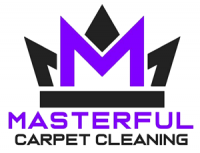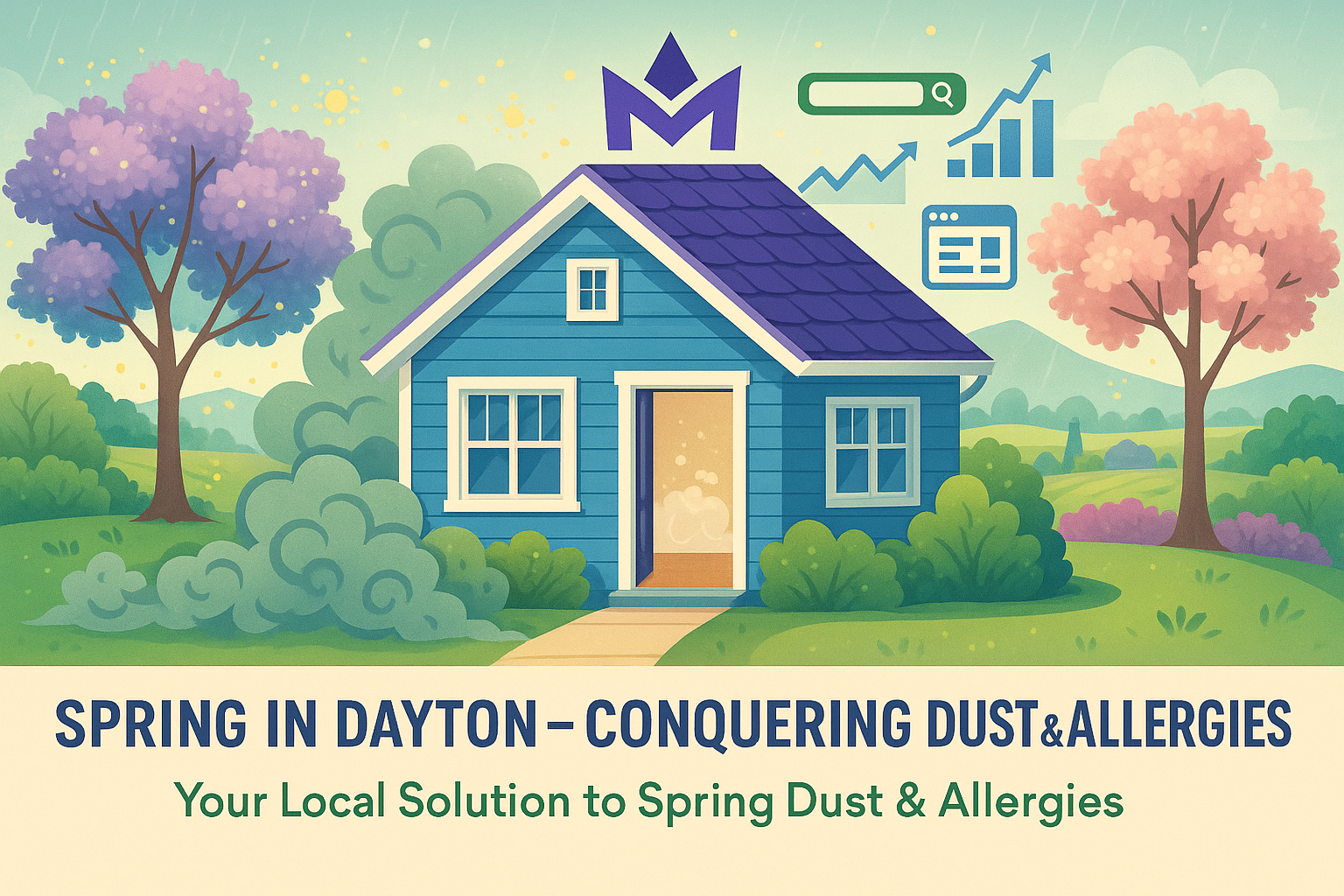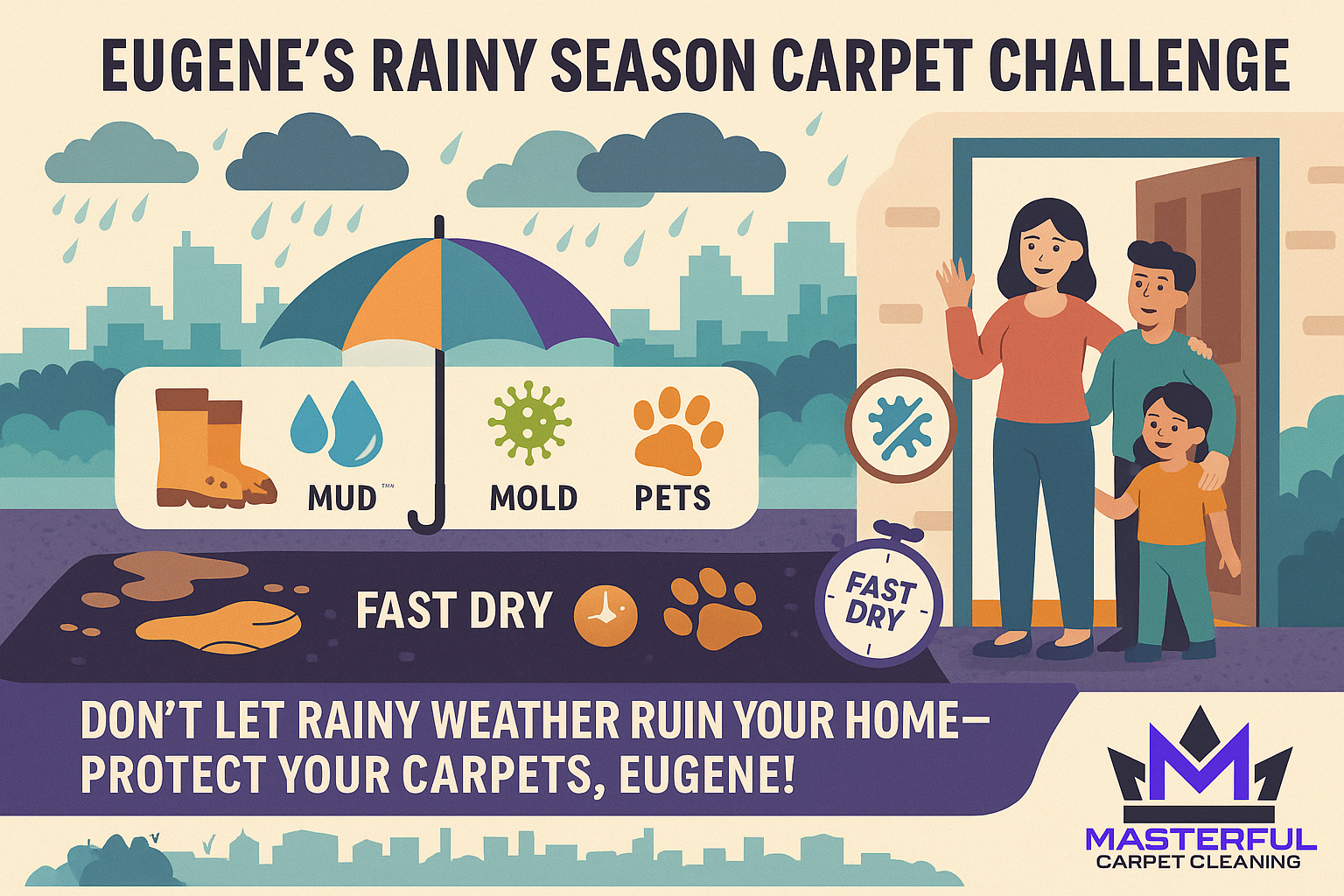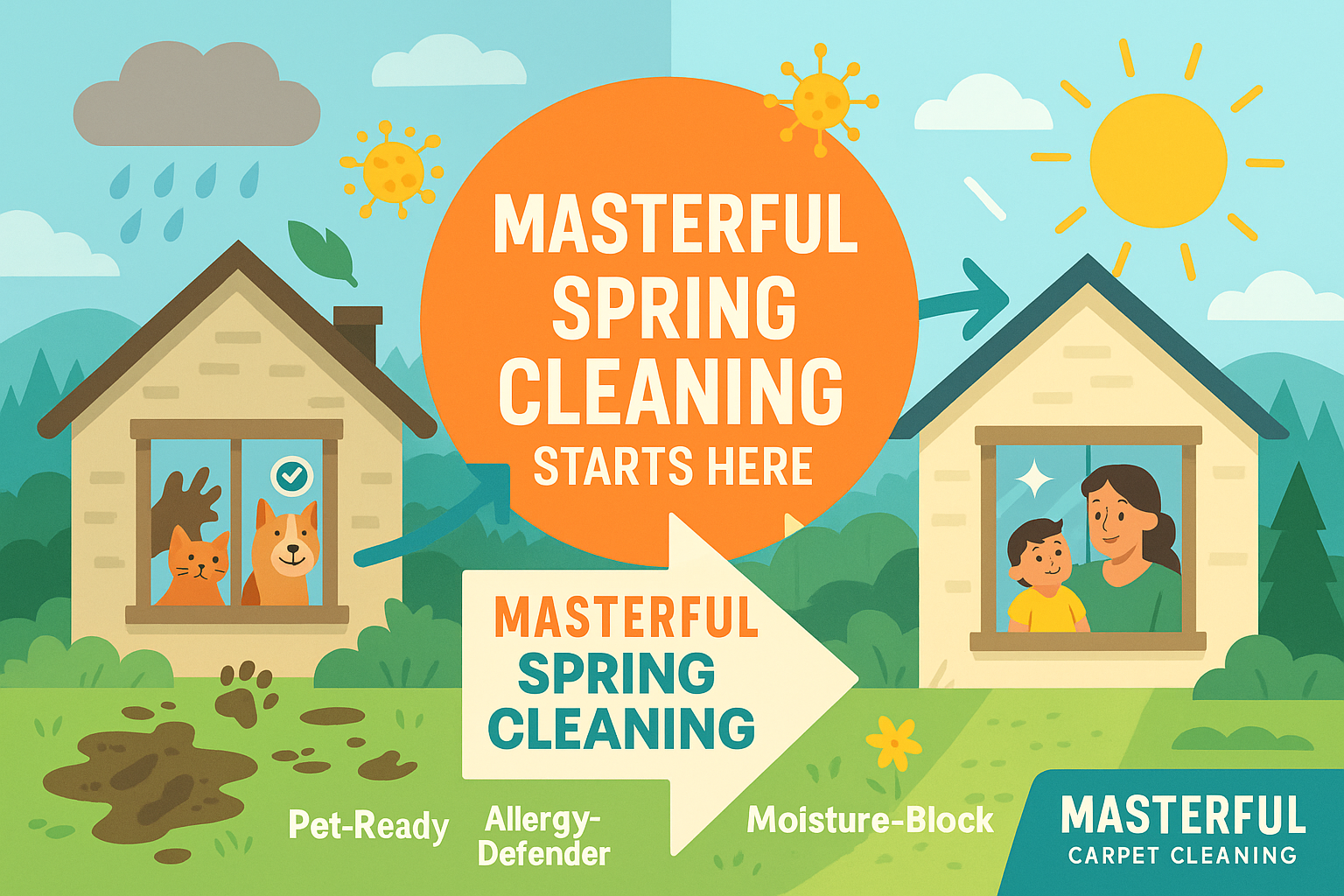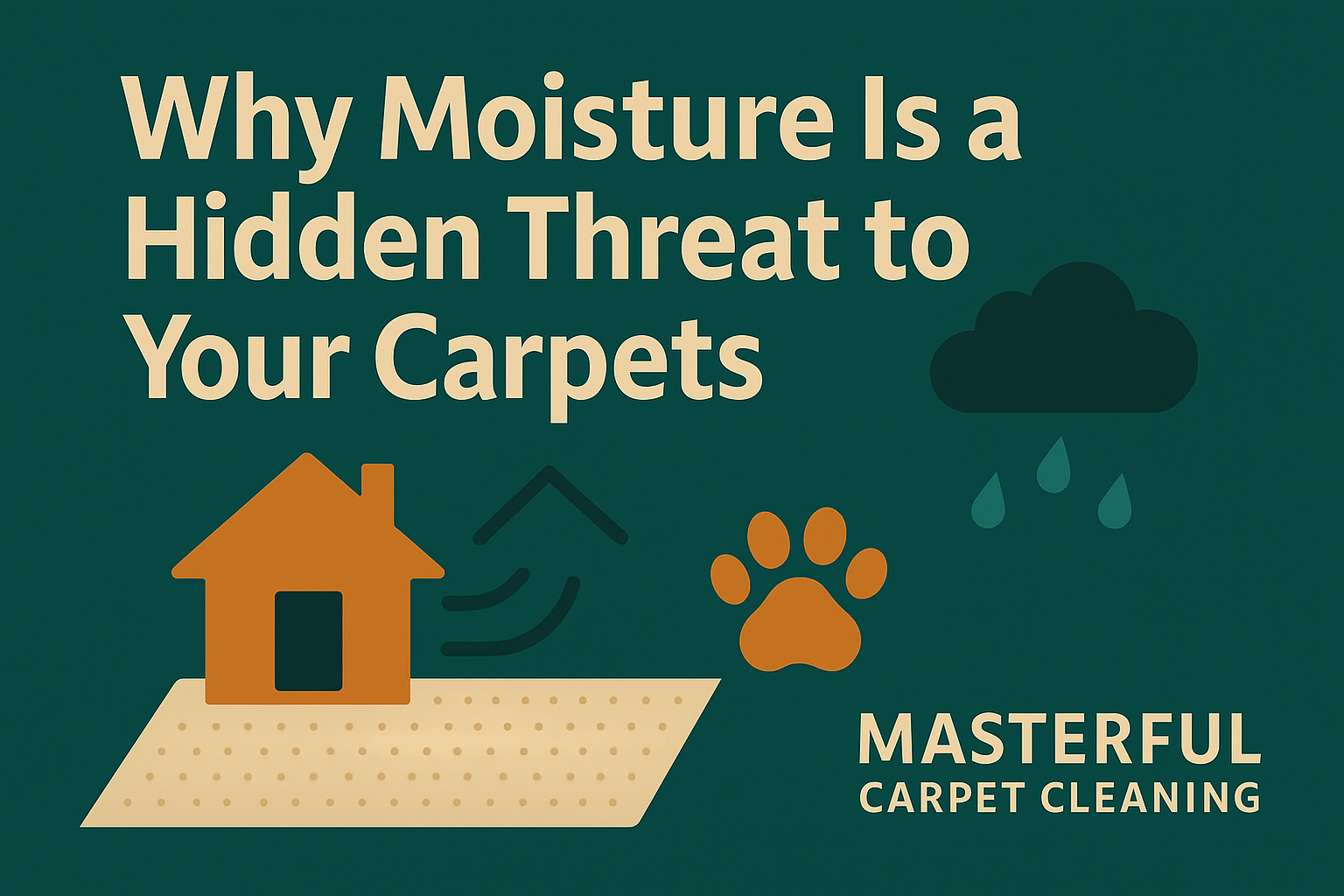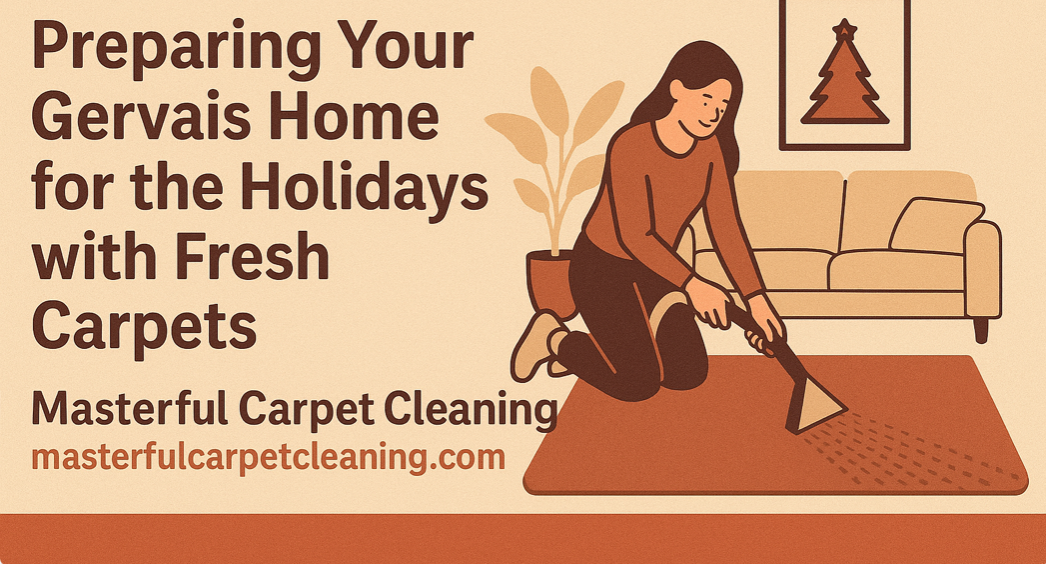Effective Repair Techniques for Water-Damaged Carpets

Water damage in carpets occurs when water infiltrates the carpet fibers, leading to potential mold growth and structural damage. Prompt action is important to prevent further deterioration and ensure a healthy living environment.
Understanding Water Damage
Types of Water Damage: Water damage is classified based on the source’s cleanliness:
- Clean Water: Originates from sanitary sources like rainwater or leaking pipes, posing the least health risk.
- Greywater: Comes from sources like burst pipes or toilet overflows, containing contaminants that could pose health risks.
- Blackwater: The most severe form, originating from sewage backups, containing harmful bacteria and pollutants, leading to serious health issues.
Effective Water Extraction Methods
Removing Excess Water: Key to preventing mold and ensuring successful restoration:
- Wet/Dry Vacuum Use: Employ a shop vacuum designed for water to effectively remove moisture.
- Absorbent Materials: Utilize microfiber towels or sponges for soaking up residual water.
Accelerating the Drying Process
Quick Drying: Important for mold prevention and integrity restoration:
- Fans and Dehumidifiers: These tools are critical for promoting air circulation and reducing humidity.
- Maximize Natural Ventilation: Opening windows and doors enhances airflow, aiding in the drying process.
Carpet Cleaning and Sanitization
Restoring Carpet Condition: Essential steps to remove dirt, bacteria, and fungi:
- Shampoo or Steam Cleaning: Effective methods for deep cleaning the carpet.
- Baking Soda Application: Sprinkle baking soda to absorb moisture and neutralize odors.
Assessing Carpet Padding
Carpet Padding Evaluation: If wet or damaged, replacing the padding is important to prevent mold growth and ensure carpet integrity.
Preventing Future Water Damage
Proactive Measures: Regular maintenance and waterproofing solutions can safeguard your home:
- Maintenance Checks: Regular inspections of plumbing and roofing to prevent leaks.
- Waterproofing Solutions: Implement measures like sealing cracks and installing sump pumps to protect against water damage.
When to Call Professionals
In severe cases, professional restoration services are necessary to effectively handle the damage and ensure thorough restoration.
Immediate Response to Water Damage
Initial Steps
Stop the Water Source: Quickly identifying and stopping the source of water is paramount. Common sources include leaks, burst pipes, or flooding. Shutting off the main water supply or addressing the specific cause can halt further damage.
Remove Standing Water: After ensuring the area is safe and electricity is off to prevent electrical hazards, begin removing standing water. A wet/dry vacuum is highly effective for this purpose, allowing for the suction of water directly from the carpet. Without a wet/dry vacuum, towels, mops, or absorbent materials can be used to soak up the water.
Ventilation and Drying: Opening windows and using fans improves air circulation, significantly aiding the drying process. Dehumidifiers can also be employed to reduce moisture levels in the air, further facilitating the drying of the carpet. It’s important to act swiftly as mold can start developing within 24-48 hours of water exposure.
Tools and Techniques for Effective Water Removal
- Wet/Dry Vacuum: This tool is indispensable for extracting water. Ensure the area is clear of obstructions and use the vacuum to methodically remove the water, moving from the outer edges towards the center of the affected area.
- Absorbent Materials: For areas that are hard to reach with a vacuum, microfiber towels or sponges can be used to dab and soak up remaining moisture.
- Fans and Dehumidifiers: These are important for speeding up the drying process. Position fans strategically around the room for optimal air circulation and use dehumidifiers to pull moisture from the air.
- Natural Ventilation: Maximizing air flow by opening windows and doors can significantly aid the drying process, especially in conjunction with fans and dehumidifiers.
Safety and Precautions
Safety should be your priority. Before starting the water removal process, make sure to turn off electricity to the affected area to avoid the risk of electric shock. If you suspect the water damage is extensive or involves contaminated water, it’s recommended to seek professional help.
When to Call Professionals
If the water damage is extensive, involves contaminated water, or if you’re unable to effectively remove the water and dry the area quickly, professional restoration services may be necessary. Professionals have the expertise and equipment to thoroughly dry, clean, and restore water-damaged carpets, ensuring the health and safety of your home environment.
Timely and effective action following water damage can prevent irreversible damage to carpets and mitigate the risks of mold and structural issues. By following these initial steps and employing the right tools and techniques, you can effectively manage water-damaged carpets and maintain a healthy living space.

Assessing the Extent of Damage
Inspection Techniques
Evaluating the extent of water damage in carpets requires both visual inspection and tactile assessment. Look for visible signs of water damage such as discoloration, staining, or the presence of mold and mildew.
A musty odor can also indicate mold growth, even if it’s not immediately visible. It’s essential to feel the carpet and padding beneath for dampness; if it feels wet or cool to the touch, water damage is likely extensive.
Decision Making: Repair Versus Replacement
When deciding whether to repair or replace water-damaged carpets, several factors should be considered:
- Source and Type of Water: Clean water from a burst pipe may cause less damage and be easier to address than contaminated water from floods or sewage backups. Carpets soaked in contaminated water are usually recommended for replacement due to health hazards.
- Extent of Damage and Duration of Exposure: Minor water damage confined to a small area can often be remediated with professional cleaning. Carpets wet for an extended period (72 hours or more) are at high risk for mold growth and may require replacement. This 72-hour rule is a critical timeframe for addressing water damage to prevent the spread of mold.
- Health Risks: The potential for mold and mildew growth in water-damaged carpets poses significant health risks, especially in environments with contaminated water. Respiratory issues, allergies, and other health problems can arise from exposure to mold spores. If health risks are a concern, replacing the carpet may be the safest option.
- Restoration Possibilities: Professional restoration services may save a carpet depending on the damage’s severity and the carpet’s material. If the carpet pad is severely damaged or the carpet has been submerged in contaminated water, restoration efforts may not be practical or effective.
- Cost Considerations: The cost of restoration versus replacement can also influence the decision. While professional drying and cleaning services can be expensive, the long-term costs associated with potential health issues or further property damage should also be considered. Insurance coverage may influence this decision, as some policies cover water damage restoration or replacement.
Evaluating these factors can help homeowners to attempt restoration or proceed with replacing water-damaged carpets. Consulting with professional water damage restoration specialists is advisable to assess the damage accurately and recommend the best course of action based on their expertise and the specific circumstances of the water damage.

Repair Techniques for Water-Damaged Carpets
Drying the Carpet
- Utilize a wet/dry vacuum for water extraction from the carpet as a preliminary step. Lift the carpet to enable airflow beneath it and deploy fans, dehumidifiers, and natural ventilation to assist in the drying process. Prompt action is the key to inhibiting mold formation, which can commence in as little as 24 to 48 hours under damp conditions.
- Comprehensive drying is indispensable for mold prevention. Mold proliferates in moist surroundings; hence, eradicating moisture from both the carpet and its padding precludes mold spores from flourishing, safeguarding the carpet’s structural integrity and the home’s air quality.
Cleaning and Disinfecting
- Post-drying, a shampooer or steam cleaner should be employed for thorough cleaning, especially in sewage or contaminated water scenarios, where professional services are advisable for pathogen elimination.
- The essence of cleaning and disinfecting lies in the eradication of pollutants and pathogens that pose health risks. Effective cleaning removes harmful bacteria and allergens, while disinfection annihilates residual germs, rendering the carpet a safe component of the household environment.
Restoration and Repair
- Carpet restoration might entail re-stretching to eliminate wrinkles or conducting patch repairs on irreversibly damaged sections. Especially in severe water damage instances, replacing the carpet padding might be necessary.
- Restoration aims to revert the carpet to its original state, ensuring safety, cleanliness, and visual appeal. Restoration activities not only prolong the carpet’s lifespan but also circumvent the expenses associated with untimely replacement.
Preventing Mold and Mildew Growth
- Maintain low indoor humidity levels, promptly address spills or leaks, and secure adequate ventilation across the household. After cleaning, applying mold inhibitors to carpets can offer additional mold prevention.
- Typical mold inhibitors are formulations applied directly to carpets post-cleaning, containing antimicrobial properties to hinder mold spore proliferation.
Efficient and prompt intervention is essential when managing water-damaged carpets to avert mold proliferation and assure the carpet’s longevity and safety. For extensive damage or contamination, professional restoration services are recommended to guarantee proper cleaning, disinfection, and restoration efforts.

Professional Services Versus DIY
- Seek professional help for water damage involving black water, extensive damage affecting subfloors, or when DIY efforts fail to thoroughly dry and clean the carpet.
- Situations suitable for professional intervention include those that require specialized knowledge, equipment, and safety measures not typically available to homeowners. This is particularly true for handling contaminated water, where professionals can prevent mold, structural damage, and ensure a healthy indoor environment.
DIY Tips and Considerations
- Essential tools and materials for DIY carpet repair after water damage include:
- Wet/dry vacuum
- Fans and dehumidifiers
- Towels and sponges
- Cleaning solutions and disinfectants
- Steam cleaner for post-drying cleaning.
- The DIY approach may face limitations such as insufficient water extraction, inadequate drying, and potential health hazards from improperly handled contaminated water. Without professional-grade tools and experience, there’s a risk of incomplete restoration, leading to mold growth and compromised carpet integrity.
The choice between leveraging professional services or undertaking DIY repairs hinges on the damage’s complexity, potential health risks, and the homeowner’s capacity to address the problem effectively. While DIY can be an economical option for minor damages, professional restoration offers comprehensive solutions for severe or hazardous situations, ensuring safety and durability.

Maintenance and Prevention
Routine Care for Carpets:
Maintaining your carpets involves regular and proper care to prevent premature wear and extend their lifespan. This includes vacuuming, immediate stain removal, and professional cleaning.
- Vacuum Regularly: High traffic areas twice a week; low traffic areas once a week to prevent soil build-up.
- Clean Spills Immediately: Act fast to prevent stains. Blot spills with cleaning supplies on-hand; avoid rubbing.
- Professional Cleaning: Annually for most carpets, using hot water extraction or steam cleaning methods recommended by manufacturers.
- Furniture and Pet Hair Management: Rotate heavy furniture to avoid indentations; use a squeegee for pet hair removal on short fiber carpets.
- Environmental Protection: Use entry mats and blinds to protect against dirt and UV damage.
Water Damage Prevention:
- Implement strategies to safeguard your home against water damage, which is a common threat to carpets and overall home integrity.
- Preventive measures focus on managing water flow around and in your home to protect its structural elements and interior, including carpets. Essential actions include improving drainage, repairing leaks, and ensuring your home’s exterior is equipped to handle water.
- Strategies:
- Ensure Good Drainage: Clean gutters, direct downspouts away from the house, and slope your yard to prevent water accumulation near the foundation.
- Sump Pump Maintenance: Test your sump pump annually, particularly before storm seasons, to prevent basement flooding.
- Leak Repairs: Regularly inspect and fix leaks in pipes, roofs, and windows to prevent moisture intrusion that can lead to carpet damage.
Efficient carpet care and water damage prevention are key to maintaining your home’s appearance and structural health. Regular vacuuming, spill management, and annual professional cleanings are key to extending your carpets’ life. Similarly, proactive measures against water damage—such as maintaining proper drainage and fixing leaks—preserve not only the condition of your carpets but also your home’s foundation and interior spaces.
Adopting these practices ensures the longevity of your carpets and contributes to a healthy, well-maintained home environment. By staying informed and proactive, you can enjoy durable, beautiful carpets and secure home for years to come.
Author
-

As the Co-Owner of Masterful, Randy has been providing quality cleaning services to the Salem and Portland areas of Oregon for many years. He has built a reputation for excellence in the industry. His team take prides in using the latest cleaning techniques and technologies to deliver exceptional results every time.
View all posts

